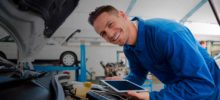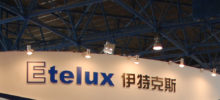Title
Title
Various welding applications today require not only mechanical stability of the joint but also properties such as leak safety, minimizing impurities, absolute cleanliness, and smoothness of surfaces. These requirements are critical when perfection has to be delivered. Both the aerospace and F1 industry benefit from this approach to their welding practises.
An argon gas shielding environment was applied relatively early to protect the molten metal from oxygen, moisture and nitrogen to reduce formation of oxides, toxic fumes and tarnishing of the metal surface. Manually operated shielding systems such as gas lenses, trailing shields and backing bars require highly experienced and specially edu-cated personnel to adjust the correct shielding conditions. These methods are especially challenging and some-times inappropriate. In particular titanium has the most stringent demands for purity of the shielding gas. Even at temperatures below the melting point, minor amounts of oxygen, moisture and nitrogen cause metal to become brittle. Any kind of coloration is evidence of chemical side reactions which take place between the base material and reactive components of the air despite every shielding effort.
Despite the precautions taken to avoid contamination, it is inevitable that manually operated shielding arrangements will occasionally fail to fully protect the weld.
Absolutely reliable exclusion of reactive gases rand moisture in the welding environment is guaranteed when using inert gas welding chambers. The concentrations of interfering components like solvent vapors, moisture, oxygen and nitrogen can be reduced to values below 1ppm. Although the use of these chambers looks quite cumbersome at first, the advantages are irrefutable: complete protection of the weld root and cap is provided regardless of joint geometry or component complexity. Rigid chambers are typically made of stainless steel and depending on the type of welding process incorporate handling systems, fume extractors and several clear viewing panes or radiation protection shields.
These advantages include:
Oxygen & nitrogen free welding environment:
- Prevention of oxide and nitrite formation
- Reduction of fume formation
- Smooth weld seam
- Avoidance of post-welding treatment
Moisture free welding environment:
- No physisorbed water on the base metal
- Clean (bubble free) weld seam
- Parts can be pretreated in a heated antechamber to remove adsorbed water
Closed inert gas system:
- Reproducible, well-defined, recordable welding environment conditions assure a controlled welding process
- Highest quality standards for the end product
- No waste of expensive inert gas (recirculation and purification principle of gloveboxes)
- Complete removal of welding fume
- No release of toxic alloy components
- Geometrical complex parts can be welded without additional shielding efforts
- No loss through waste because of inappropriate gas shielding
In addition to our standard welding boxes, we offers the following inert gas component products:
- Customized systems for resistance welding
- Laser welding boxes with laser vitrification
- Plasma welding boxes with nitrogen free argon atmosphere
- Special feedthroughs for every kind of service pipe
- Particle removal systems with conti-nuously operating segregation
- Integrated plasma burners which are often used for sealing off tantalum tube






























